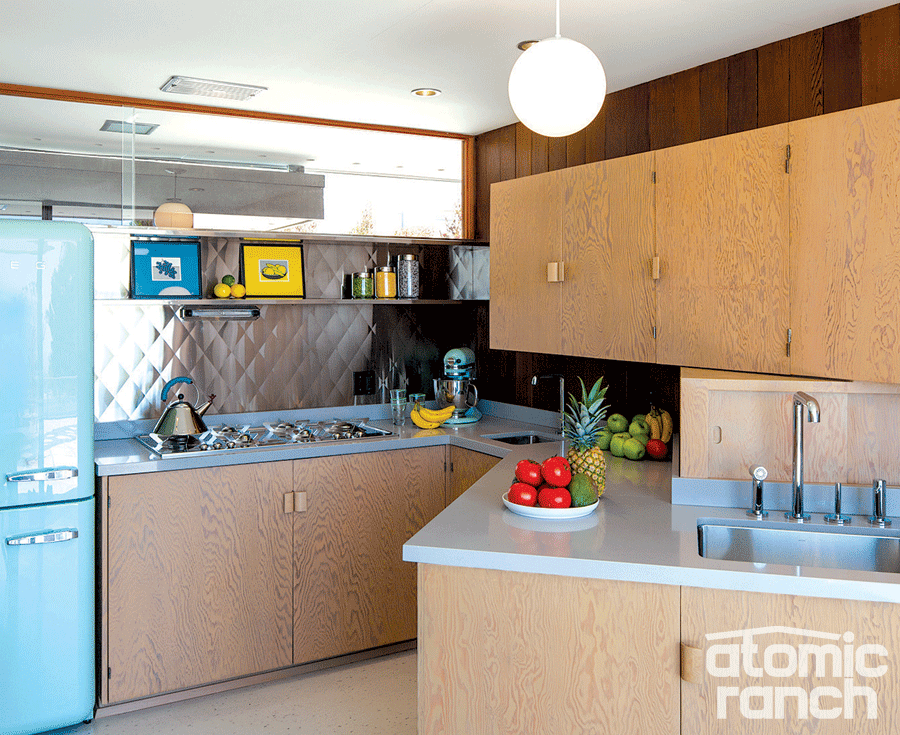
With the renovation underway in their 1951 home in the Santa Monica Mountain community of Crestwood Hills (part 1), Alex and Kristin wade deeper into the nitty grittiness of a historically sensitive, pro-elbow grease approach to renovation, from the exterior to the period kitchen.
Among the tasks the couple tackled, either on their own or alongside pros, were installing a four-layer roof, building a new deck and concrete retaining walls, repairing sliding window tracks and switching to safety glass as needed, and complete landscaping. They replicated or refinished the plypanel interior walls, tiled the baths, installed flooring and labored through a year’s worth of paint stripping.
The exterior redwood siding had been painted to cut down on maintenance—the canyon is in a marine climate that is super tough on wood, Alex says—and much of the interior was painted white, so he used several approaches.
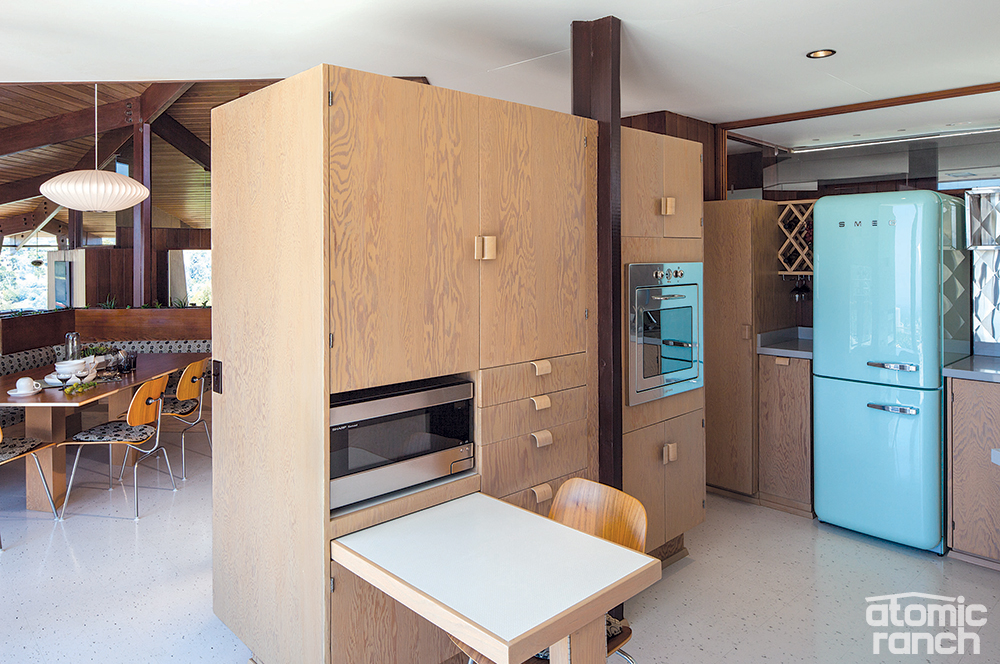
“The Paintshaver Pro has triangular carbide blades that spin and you can set it to remove the top 1/16″ of paint, barely touching the wood. If any of your paint is lead, you can hook it up to a HEPA vac,” he explains. “On a house like this, you have to presume all of the paint is lead-based. I rented a leadpaint X-ray gun for $350, and spent a day gunning every surface and recording the readings on Post-it notes. If it’s 1.0 mg, you need to get a professional remediator; under that, you can use wet removal.
“We had four months of professional remediation,” he continues. “There was asbestos in the walls, on the ducting and in the floor covering and its mastic—in addition to the highlead paint areas. For the cabinetry, masonry block and paneling, I used Peel Away. I covered it with plastic and let it sit for a week, then pulled off the softened paint and used a power washer—inside the house. For most of the two years, our house looked like a Dexter kill room.”
The period kitchen had seen better days, but with original cabinetry by Walter Gropius’ General Panel Corporation, Alex lobbied to restore. “When we first moved in, I wanted to tear out the kitchen and get a brand-new, fancy kitchen,” Kristin admits. “We were ready to alter and change the house, but instead it turned into a restoration. I didn’t understand this house—I’d only lived in traditional houses—and didn’t really even understand modernism. But now I’m so happy we have our original kitchen.”
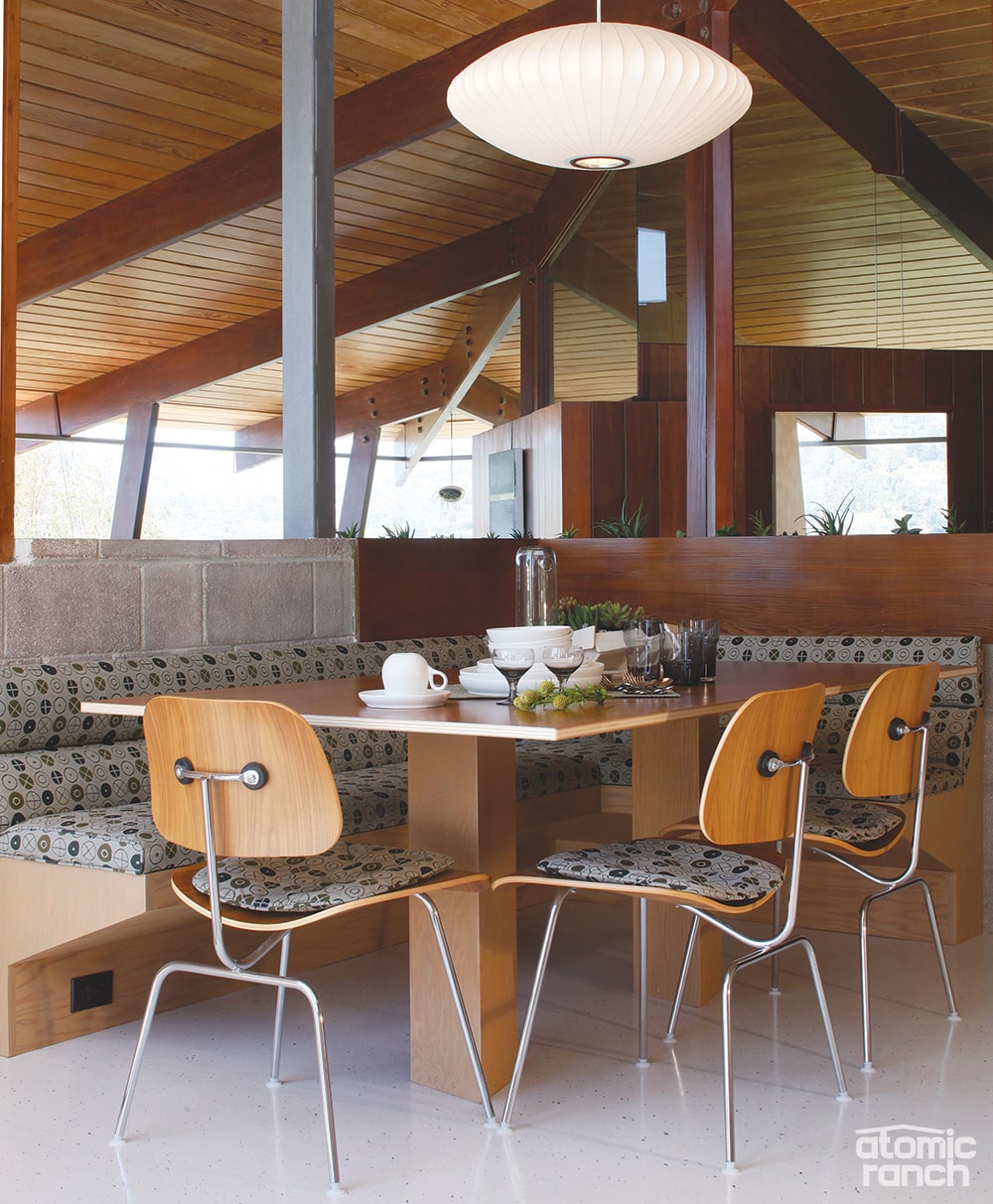
The cabinets were repaired, stripped and refinished, and Silestone counters and Armstrong vinyl flooring installed. Kozlowski found a source for replacement diamond-patterned stainless steel backsplash material, and requested a banquette for the adjoining dining area. New Smeg appliances replace the original Thermador cooktop and an ’80s oven and refrigerator.
“The refrigerator was quite an ordeal to get into the country—it’s not sold in the United States,” she says. “I’m obsessed with that green color, and was able to buy it on an English website, but figuring out the logistics of getting it over here was a real pain.”
A Period Kitchen in a Period Home
The pursuit of period perfection continues to other parts of the house. Read on in PART 3 to discover how Alex and Kristin find another kindred spirit to join the team.

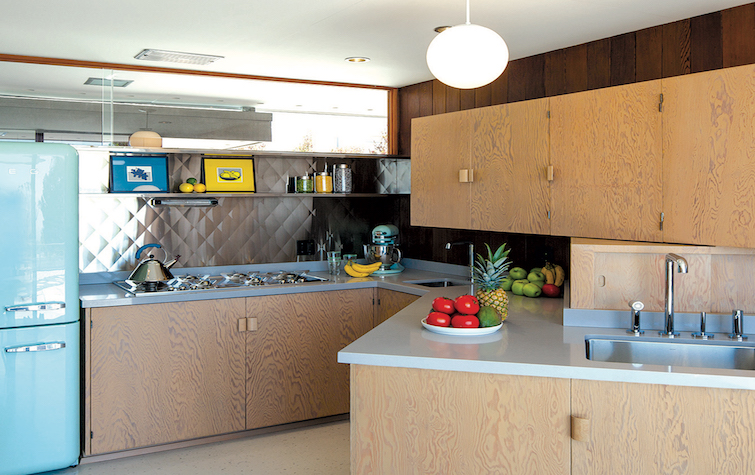










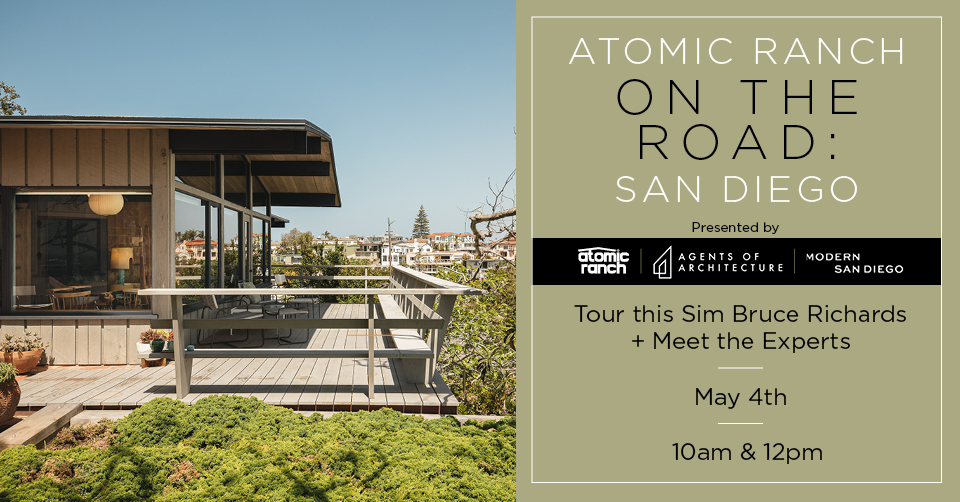

1 comment